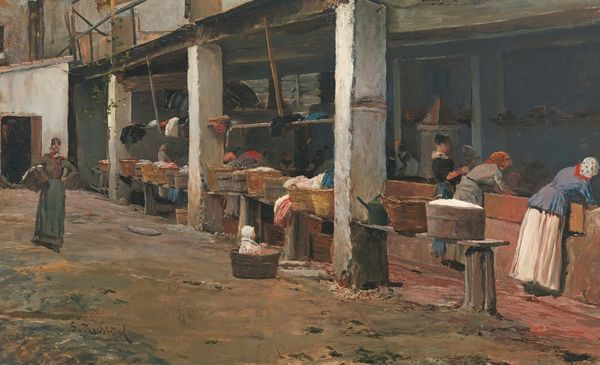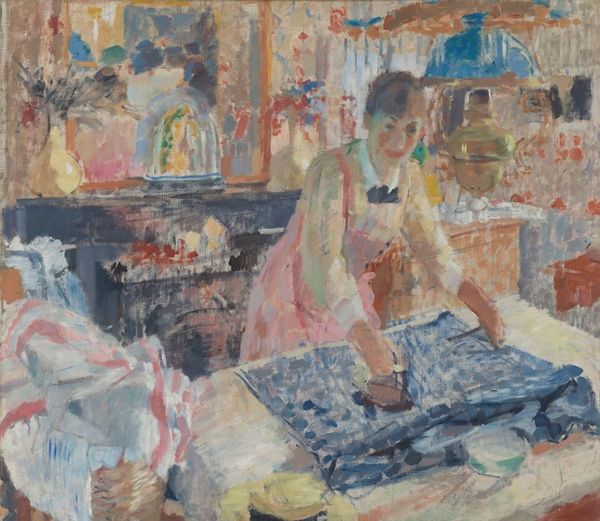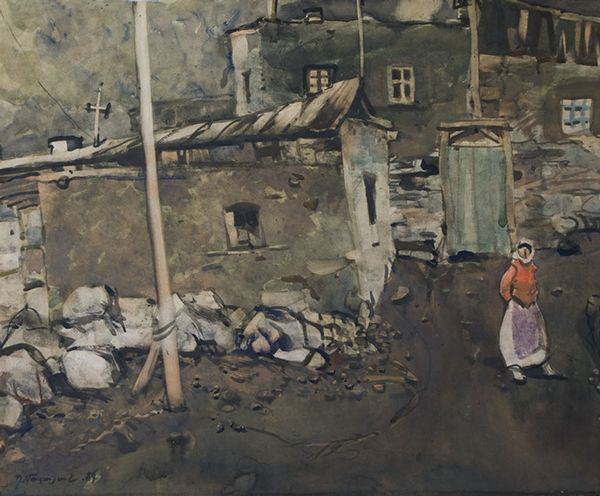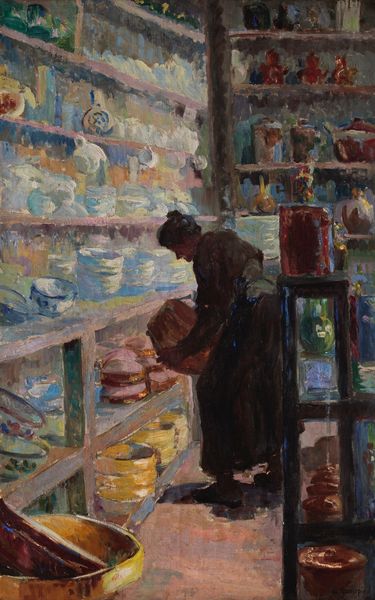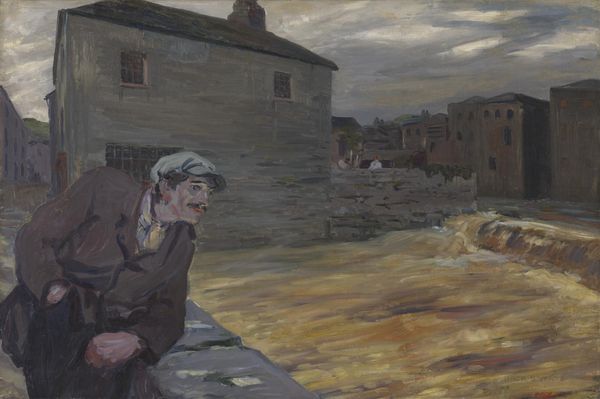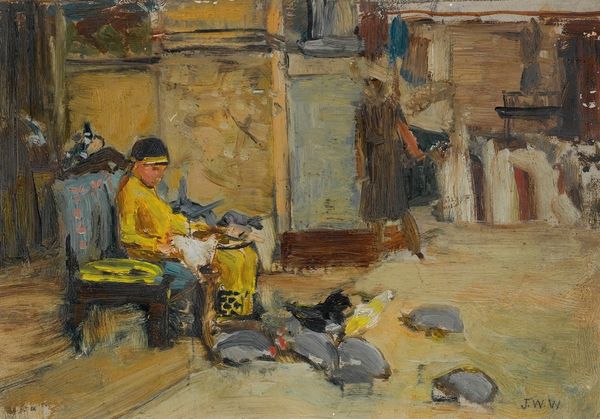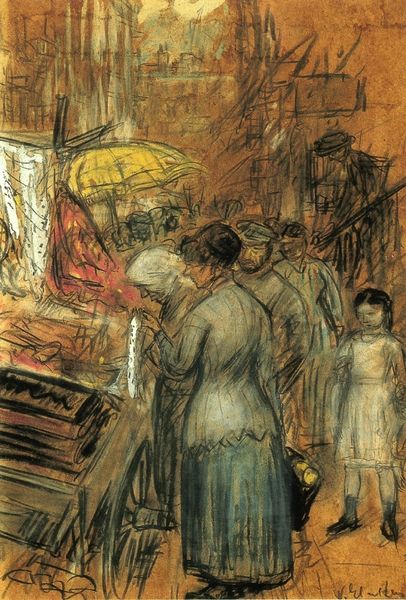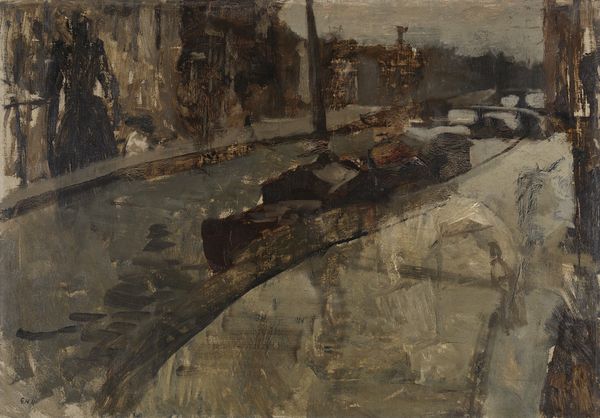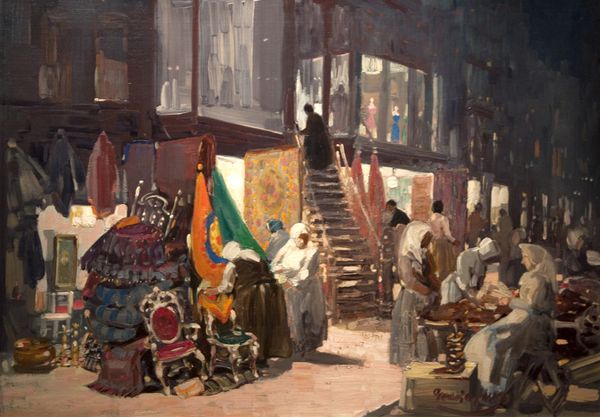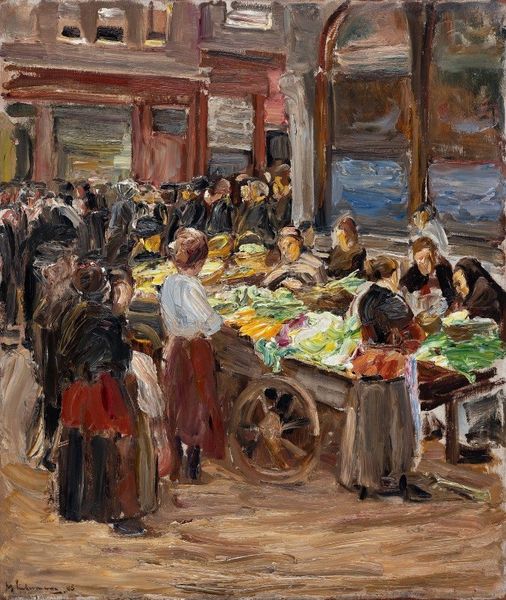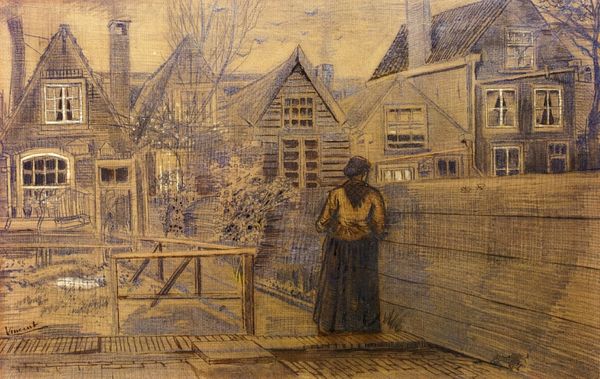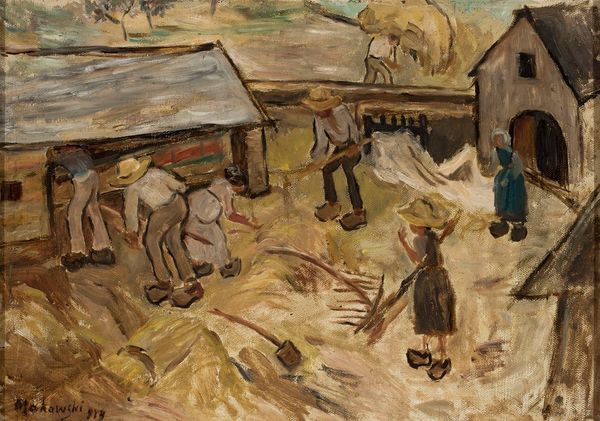
Dimensions: 43.5 cm (height) x 56.5 cm (width) (Netto)
Curator: Welcome. We're standing before "The Butcher," or "Slagteren" as it’s known in Danish, painted by Peter Hansen sometime between 1883 and 1928. You can find it right here in the SMK. What strikes you first about it? Editor: Mmm, that's heavy. It's heavy in atmosphere and palette. Immediate impression: I can smell this painting. Is that strange? Curator: Not at all! Hansen's paintings are fascinating for how they capture daily life. Remember, realism and impressionism were powerful influences then, shifting artistic focus towards everyday scenes. The portrayal of labour was gaining artistic significance. Editor: And I'm feeling that daily grind, looking at it. What's also odd, there's this haze around it, like it's all been dipped in honey and shadows. It has a nostalgic pull, like something remembered, but slightly distorted. Curator: Hansen was part of the Funen Painters, a group who broke away from the establishment, seeking authenticity in portraying rural and small-town life. His compositions often placed the figure against broader contextual setting like we see in the painting, emphasizing their interaction with their environment and a broader depiction of everyday labor. Editor: Okay, it looks like more than mere reportage of a scene. Like that casual stance of the butcher; the choice to have all those browns and tans dominant against pale butcher. Like some secret sauce is slathered on it, some unsaid ingredient. It's simple and true. What about public sentiment back then? How was this scene looked upon? Curator: Works depicting daily labor gained respect, but were part of discussions about representing different social classes and working conditions. This image reflected the changes within art and broader societal values of this time, opening dialog between city and surrounding rural areas. Editor: Right! Well, this butcher of Peter Hansen still manages to be visceral but oddly beautiful to me, so timeless...that must be due to Hansen’s eye to see and feel and make paint feel more than it appears. I see it still connects in our time with just paint alone. Curator: I agree. Hansen challenges us to consider the narrative of daily existence. To think about how labor and place intertwine with who we are and to think how art opens our perspectives.
Comments
No comments
Be the first to comment and join the conversation on the ultimate creative platform.

